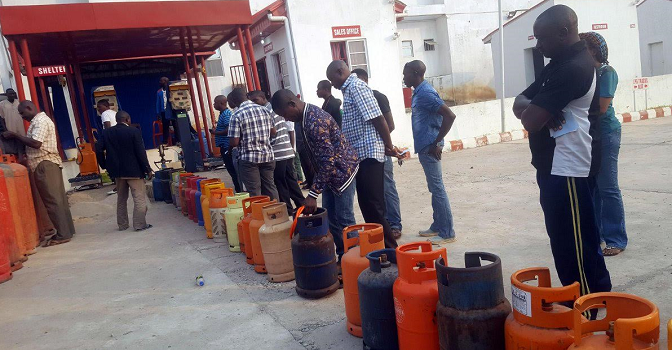
The average retail price of refilling a 12.5kg cylinder of liquefied petroleum gas (LPG), popularly known as cooking gas, rose by 44.51 percent year-on-year in July 2025.
The National Bureau of Statistics (NBS) disclosed this in its LPG Price Watch report for July 2025, released on Tuesday.
According to the bureau, the price increased from ₦14,261.57 in July 2024 to ₦20,609.48 in July 2025.
On a month-on-month basis, however, the average cost declined by 1.91 percent, from ₦21,010.56 in June 2025 to ₦20,609.48 in July.
The statistics office cautioned that the slight decline may not translate into a sustained relief for consumers.
The report noted that in July 2024, the country recorded a 9.37 percent drop in gas prices month-on-month, with costs falling from ₦15,736.27 in June to ₦14,261.57 in July of that year.
For the 5kg cylinder, NBS said the price fell by 0.96 percent month-on-month from ₦8,323.95 in June 2025 to ₦8,243.79 in July.
But year-on-year, the cost increased by 37.98 percent from ₦5,974.55 in July 2024.
State-by-state analysis showed that Adamawa posted the highest average price for a 12.5kg cylinder at ₦22,528.39, followed by Rivers (₦22,512.49) and Taraba (₦22,363.57).
The lowest prices were recorded in Yobe (₦19,030.00), Niger (₦19,154.99) and Nasarawa (₦20,000.62).
For the 5kg cylinder, Adamawa again topped the chart with ₦9,011.36, followed by Rivers (₦9,005.00) and Taraba (₦8,945.43).
Yobe recorded the lowest at ₦7,612.00, while Niger (₦7,662.00) and Nasarawa (₦8,000.25) also ranked among the least expensive.
By zone, the south-south posted the highest average retail price for a 12.5kg cylinder at ₦21,278.14, followed by the south-east at ₦20,802.89.
The south-west recorded the lowest at ₦20,184.79.
For the 5kg cylinder, the south-south again topped the chart with ₦8,511.26, followed by the south-east at ₦8,321.16, while the south-west recorded the lowest at ₦8,073.92.
NBS said the findings were based on data from more than 10,000 respondents across Nigeria’s 774 local government areas.
